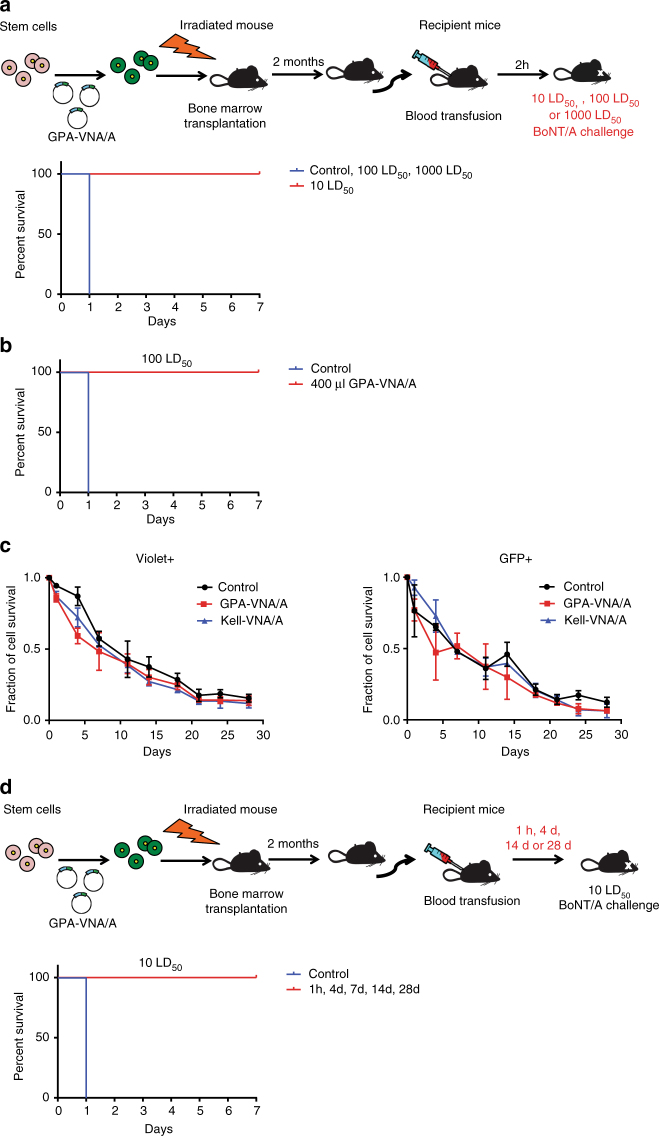Fig. 2.
Mice transfused with engineered RBCs are protected against BoNT/A challenges. a C57BL/6J mice were transfused with 100 μl blood from chimeric mice previously transplanted with GPA-VNA/A-expressing progenitors. The recipient mice were challenged with 10, 100, or 1000 LD50 BoNT/A 2 h later and survival was monitored (n = 6/group). Note: the curves depicting control mice and transfused mice challenged with 100 and 1,000 LD50 are overlapping. b C57BL/6J mice transfused with 400 μl blood from chimeric mice previously transplanted with GPA-VNA/A-expressing progenitors were challenged with 100 LD50 BoNT/A 1 h after transfusion and survival was monitored (n = 4/group). c Circulatory half-life of the transfused RBCs. In all, 100 µl of blood from transplanted mice with ~3% of their RBCs expressing vector only, GPA-VNA/A, or Kell-VNA/A were stained with violet-trace dye and transfused into recipient mice. The fraction of transfused RBCs in recipients was analyzed by flow cytometry at the indicated time points. The violet-trace dye represents the total population of transfused red blood cells, of which only ~3% are GFP+ and express the exogenous chimeric protein, while the GFP signal represents only the 3% of the transfused RBCs expressing the VNAs. (n = 3/group, mean ± S.E.M.). d Survival plot of transfusion recipient mice treated as in the diagram were challenged with 10 LD50 BoNT/A at 1 h, 4 days, 14 days and 28 days post-transfusion and monitored for 7 days (n = 6/group)

